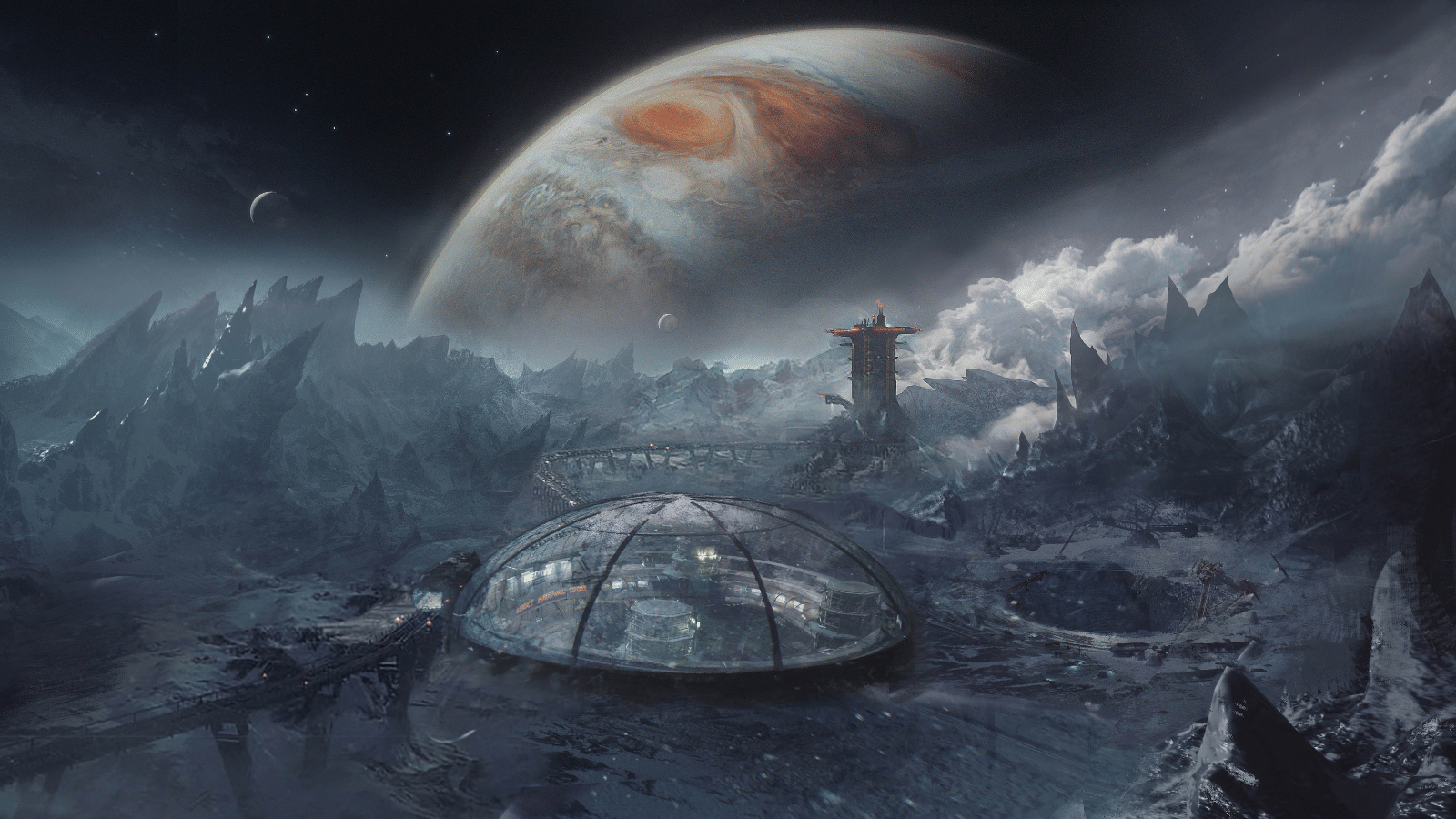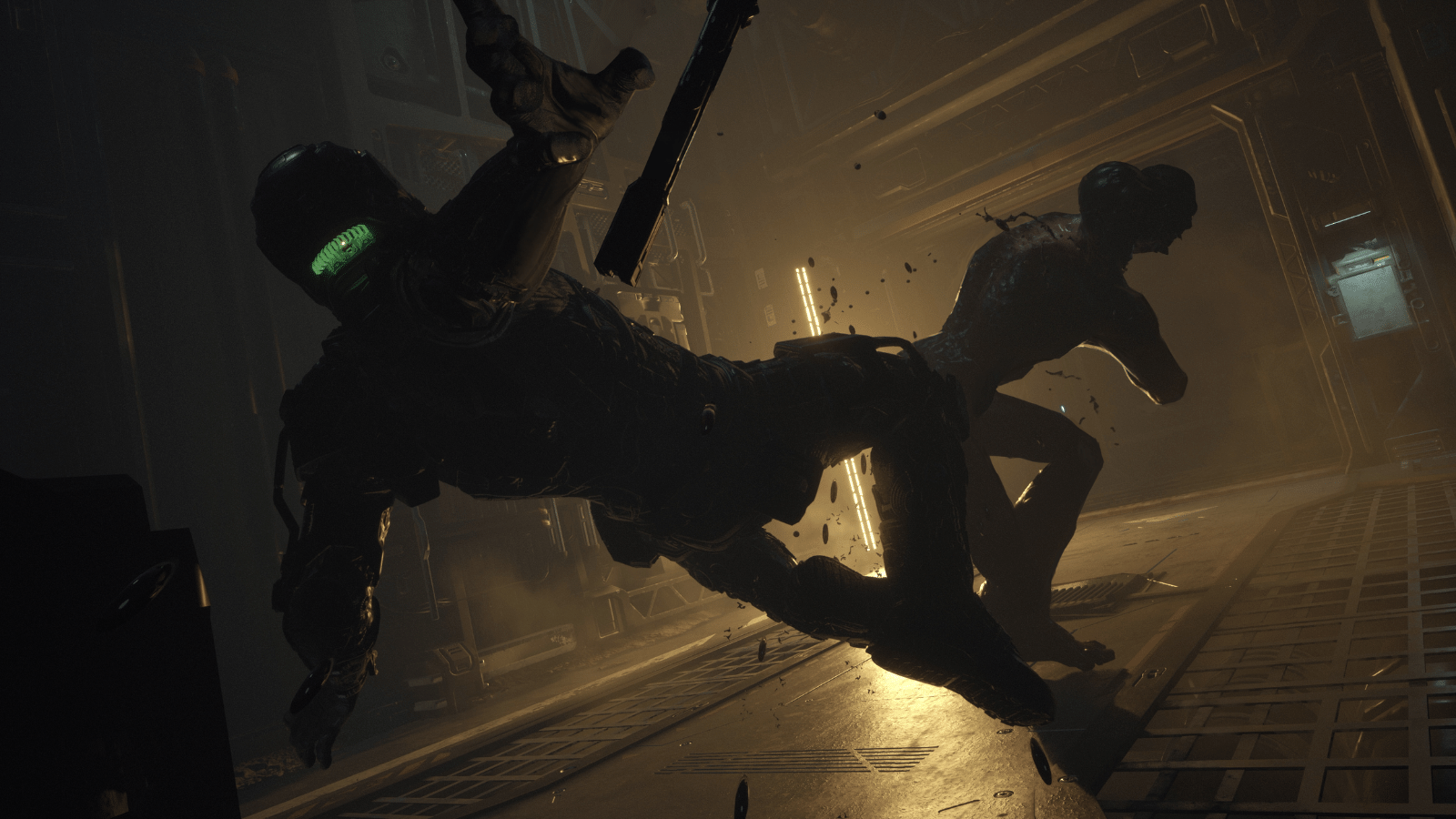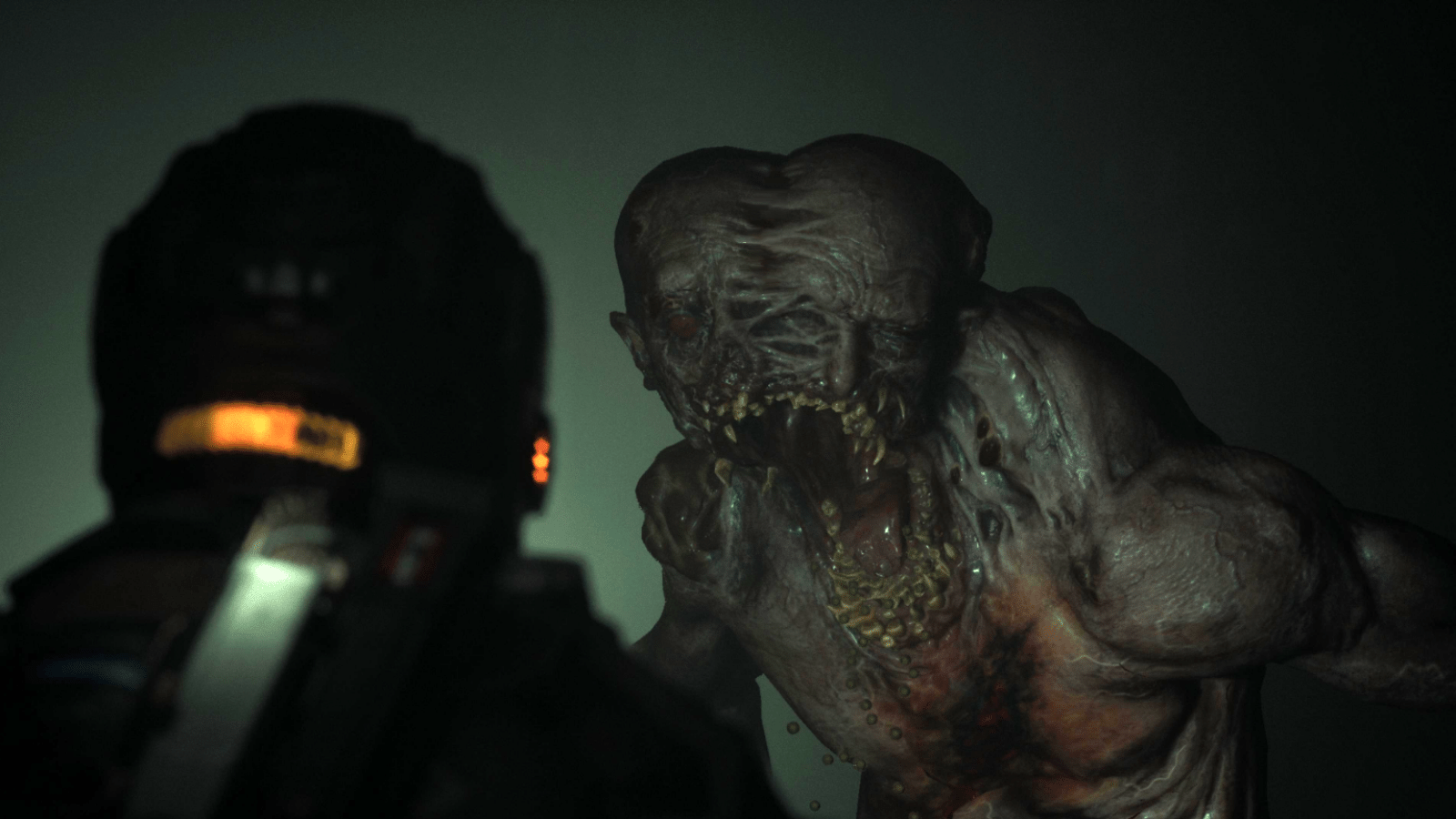Let’s set ourselves a challenge with this review. We’re going to discuss The Callisto Protocol on its own merits and not compare it to the yardstick set by its spiritual predecessor, Dead Space, which outside of this introductory paragraph, will not be mentioned again over the course of the article… even if there are quite a few parallels to draw upon.
The Callisto Protocol puts you in the shoes of Jacob Lee, a space-age truck driver who takes on a high-paying gig to transport some standard-fare medical supplies to the Black Iron Prison situated on Callisto, Jupiter’s second-largest moon. While making the final descent to his destination, he finds his ship hijacked by a terrorist group and ends up crash landing, after which Jacob is apprehended and thrown into Black Iron as an inmate. Initially confused by this turn of events, he quickly ends up with bigger fish to fry, awakening in his cell only to find that all hell has broken loose in the prison.
There’s just enough intrigue in The Callisto Protocol’s story to keep players forging ahead through its roughly ten-hour runtime, and there’s definitely enough depth in developer Striking Distance Studios’ maiden world to unpack, with the ending certainly leaving enough wiggle room for DLC or a sequel to add to it. Still, I found myself feeling a little shortchanged by the time the credits rolled as the conclusion felt a little abrupt.
As a survival horror game, you’ll naturally find yourself navigating tight, dark interiors, aiming down your sights so you can point your flashlight at whatever nasty creature is waiting to pounce at you. To its credit, The Callisto Protocol’s environments are varied enough over the game’s eight chapters to keep things fresh as you make progress. From a psychiatric ward and cell blocks, to the snowy surface of the moon, and everything in between, you won’t find yourself fatigued by repetitive-looking levels.

If you’re into the classic survival horror loop of ‘fight, sweat, loot, repeat,’ you’re going to have a great time on Callisto. An intuitive and enjoyable dodge mechanic had me treating combat like something of a rhythm game, although as a fan of Dark Souls (and more recently God of War Ragnarok), it did take some mental rewiring to stop myself from frantically tapping circle or X to get out of the way of an enemy’s attack, rather than simply tilting the left stick left or right. That being said, adapting to and mastering Callisto‘s combat style can be satisfying once you get the hang of it.
Much like the aforementioned spiritual predecessor which we won’t be naming, The Callisto Protocol is extremely visceral — there will be blood and gratuitous dismemberment, though that cuts both ways. A well-placed gunshot or swing of your baton will make short work of an infected foe’s extremities, but it certainly won’t stop them from coming at you until you dish out a more definitive end.
Jacob has a number of options to dispatch incoming threats, although I found myself getting up close and personal with the baton wherever possible, being the ammo scrooge I am. He also has a pretty standard array of guns, all of which have alt-fire modes when fully upgraded. Unfortunately, I didn’t get a chance to tinker with these, having chosen to invest my hard-earned Callisto Credits in Jacob’s baton, as well as a gadget called the GRP, which can be used to fling monsters into environmental hazards, and vice versa. Weaving all of the above methods of slaughter proved to be delightful if not a little tedious — the game’s latter stages feature beefier bosses and an archaic weapon-swapping mechanic.
If you manage to get yourself killed in just the right spot, you will be treated to some very violent death animations, which range from macabrely entertaining, to a few that will force an audible ‘oof’ out of you. While there are certainly unsettling and anxiety-inducing moments, if jumpscares elicit an eye roll from you rather than making you leap off your couch, I would lean towards lumping The Callisto Protocol into the action-adventure camp, but perhaps I’m a little too desensitized.

Callisto Protocol‘s key shortcomings stem from a number of odd quality-of-life choices as well as a somewhat iffy user interface, which frankly felt quite dated. For one, autosaves are oddly paced. For example, if you finish one of the game’s chapters and play through the opening moments of the next, one might assume you can close the game and pick up where you left off. Instead, the next time you fire up your console, you might find yourself at the tail end of the previous chapter, just before the final cutscene triggers.
If you enter a safe room with an upgrade terminal and spend ten minutes obsessing over what weapon to beef up and what resources you should sacrifice to get those last few bits of currency for it, you would expect an autosave once you back out of the upgrade tree. Instead, after entering the next room and promptly having your head bitten off, you’ll find yourself respawning back when you first entered the room with the upgrade terminal, with none of your newly purchased upgrades. Hopefully, future patches will address autosave frequency.
Then there’s the user interface. If I’m trying to understand and unpack the mystery around Black Iron prison, surely I’d be able to let audio logs play in the background while I search every nook and cranny for valuable loot, right? Nope, the second I leave the menu, the audio log cuts off.
The UI also becomes a bit of a glaring issue in the second half, when boss fights that can beat you to a pulp in one swing become more commonplace. Switching through weapons is a tedious process on a controller, requiring you to let go of the left stick — which, for the record, is responsible for dodging and just surviving in general — and hit a directional button. At this point, you need to scroll through a list of the three different pistol variants — as well as a shotgun and an assault rifle — all of which look similar and can’t easily be distinguished from one another, as the heads-up display doesn’t include their names.

The frustrating weapon system can be somewhat outmaneuvered by running away from a boss while you frantically rifle through your inventory, arguably ramping up the tension as you wonder how far away its fist is from popping your skull like a balloon. I found it to be frustrating, given that you don’t really face such tedium in other modern survival horror titles, like the latest Resident Evil games, which can still be equally tense. Granted, there is a dedicated button that can quickly swap between two guns, but that’s it. What’s wrong with a good old-fashioned weapon wheel?
Ultimately, these issues only rear their ugly heads when going up against the beefier targets, which appear towards the game’s final act. Otherwise, The Callisto Protocol is a solid title that fans of the genre can’t go wrong with. Just don’t go in expecting a story that’ll stick with you long after the credits roll.
This review is based on the PlayStation 5 version of the game. A copy was provided to us by Krafton.
Good
The Callisto Protocol shines best in its visceral, moment-to-moment combat, which strikes a good balance between feeling tense, and intuitive. What lets it down is a story that feels a little too unfinished and a few design choices that stick out like a sore thumb in this day and age.
The Callisto Protocol
